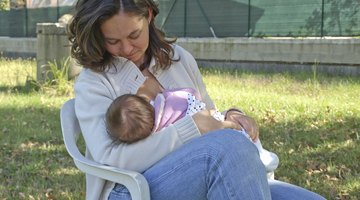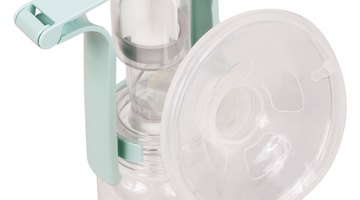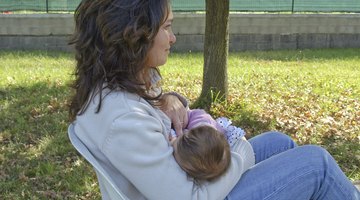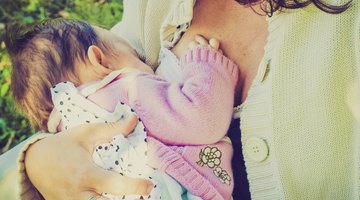How to Heal Blisters on the Breasts From Pumping
Pumping breast milk may be necessary if you plan to return to work or if you will be away from your baby for another reason. Unfortunately, like breastfeeding, pumping can cause blisters and pain, especially in the beginning. There are two types of blisters that commonly develop on the nipples from pumping. The first, sometimes called a milk blister, appears when a thin layer of skin grows over a nipple pore, blocking milk flow.
The second type is a friction blister and usually develops in response to incorrect positioning of the breast pump. Blisters from pumping increase the risk of yeast and bacterial infections and therefore require treatment.
Wash your nipple with clean water and a very mild soap. If soap is too drying, wash your nipples with a mild saline solution.
Sterilize a needle by pouring rubbing alcohol over it and use it to gently open the top of a milk blister to encourage draining. Cover the blister with an antibiotic ointment and keep it moist until healing is complete.
Check the position of the flange, or shield, on your nipple when you are pumping to determine if friction may be to blame for your nipple blisters. The flange should be the right size for your nipple and centered to prevent friction and blisters. If incorrect fit is a factor, try a different size or shape flange.
Try pumping more often for shorter periods. This may decrease skin irritation and help heal your blisters.
Apply warm compresses to your nipples to help ease pain and encourage the blisters to pop on their own.
Wipe some freshly expressed breast milk onto your nipples periodically throughout the day. Breast milk acts as a mild antibacterial agent and can help prevent the blisters from becoming infected.
Use a lanolin cream to speed healing of your nipples and ease discomfort. Lanolin cream is safe for your baby to ingest during breastfeeding, and it should not interfere with using your breast pump.
Wear breast shields inside your bra to prevent the fabric from making contact with and sticking to your blisters.











